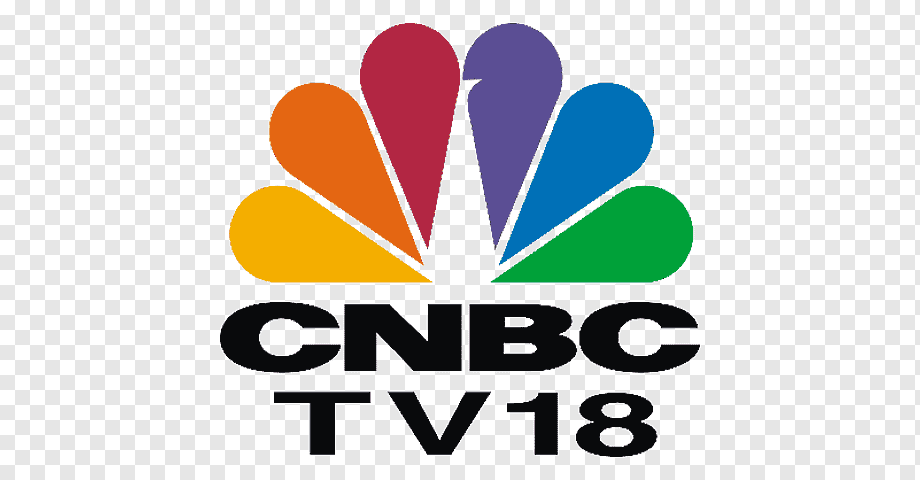Advertisement|Remove ads.
Next PSU bank merger must fix culture, capital, and synergy gaps, say former bankers
The former bankers agreed that size alone won’t make India’s lenders competitive globally. What matters, they said, is whether a merger actually improves growth, technology and risk-taking capacity

As talk of another round of public sector bank (PSB) mergers picks up, veteran bankers SS Mundra, former deputy governor of the Reserve Bank of India and former chairman and managing director of Bank of Baroda; Dinesh Kumar Khara, former chairman of State Bank of India; Padmaja Chandru, former managing director of Indian Bank; and Sunil Mehta, former managing director of Punjab National Bank (PNB), weighed in on what the next phase should look like in a discussion with CNBC-TV18.
They argue that any new merger must go beyond scale and address culture, capital, and synergies from the outset.
Khara said the focus should be on mergers that strengthen growth levers rather than simply creating larger balance sheets. Chandru stressed that cultural integration and clear communication are critical for any consolidation to succeed.
These are edited excerpts of the interview.
Q: When Dena Bank merged into Bank of Baroda (BOB), the weaker bank merged into the large bank, so there wasn't much shareholder disgruntlement. But now the small bank, for instance, Bank of Maharashtra, has grown nearly 200% in the last five years. There is a bit of a worry that we may be merged into a slightly, slowly growing bank. Do you think this will be a factor at all when the government arranges amalgamation?
Mundra: The banks which you are talking about, government continues to be the majority shareholders, and the shareholder value would be equally weighing on the mind of the largest shareholders as well. I really don't think that shareholders would be really unduly worried about it. There may be some short-term concerns, because it is a mixed bag. While growth in terms of percentage may look like, I am growing at 20% or that is growing at 12%, but then the informed investors also understands that you are growing on a large base rather than a small base, also getting the benefit of size, of scale technology and all that. So that's a mixed bag.
But having said that, let us be realistic about it. Previous round of merger, 1920 we can say in some way, it had been a success. There were short-term pains in the beginning, but in long term, profit and efficiency gain has been achieved. That is visible in the in the shared performance and everything. But as you rightly mentioned in your opening comments, technology, other things integration is fine, but as far as I understand, and I hear from my friends, the cultural integration continues to remain a key challenge.
If that is the case, the point is whether you are surviving reasonably well, or you have been put in a position to exploit your potential to the full extent. Also, the fact that the market capitalisation of five top private banks today is still higher than all the public sector banks put together. So, it raises a lot of question.
Q: What do you think will be the mechanics of the merger? Immediately, the shareholders think that those five amalgamated banks, will they be merged into Bank of India and create one big pool? The finance minister did not say about the unmerged banks. She only said, India needs large banks for growth, and the amalgamation will also have a growth angle. Do you think merging the already merged banks, Union and B0B will also be something because that will create a ₹25-30 lakh crore deposit base?
Khara: If you look at the way the banking system is stacked up currently, SBI balance sheet would be about 800 million plus, and the others are quite small. So, if at all, scale is intended to be achieved the way it is there with the global banks, the biggest one would be from China, about $7 trillion equivalent. And then the next would be maybe JPMorgan would be about $4 trillion plus. So, if at all we have to scale up to those levels maybe merging the bigger may not really be of much value.
But I would like to subscribe to the view that if at all merger has to happen, merger should actually lead to strengthening of the growth levers in the banks. Which means that unless and until there is a synergy which will flow post-merger it may not really yield the desired results. The intention should be that if at all merger has to happen, then the subsequent growth should be significantly higher; that is what it should be. And for that, there is a need for the stronger muscles, that essentially come from the skill, technology, and also the ability to take the risk and consolidation of the capital, because capital being the one scarce commodity unless, until it is put to good use, which means that the higher capital adequacy ratio is also not a welcome situation.
So, optimally, if at all, we can have a situation where the banks which have got a higher capital they can be merged with the one which are having lower capital base, and also they can offer synergies in the sense that their ability to underwrite better risk, will also emerge that should be the focus.
Q: Do you think State Bank of India (SBI) will be left untouched? Since it falls under a different Act, while other PSU banks come under the Nationalisation of Banking Companies Act, will SBI remain outside the consolidation process? In the previous round, only the State Bank associate banks were merged into SBI. Do you think we could see a Bank of India or Bank of Maharashtra merging into SBI, or is that unlikely?
Khara: In the last round of merger, we even merged the Bharatiya Mahila Bank (BMB) which part of the State Bank Group. So, that is not a challenge. But, unless and until we address the core fundamental on what we are going to gain out of merger and what will be the contours of the merger, and whether they are really addressing the basic issue, that is something which I would like to focus on.
Q: Oriental Bank of Commerce was one of the banks that was merged into Punjab National Bank (PNB) in your time. Do you think merger should be geographical? People of the same geography merge so that common branches are closed, there is genuine savings, or should it be the other way around, that you merge into a region where PNB is not well spread, say, with a Southern Bank. Should it be geographical, or should it be cultural? If two northern banks merge, then culture is more easy to handle. How should the government think?
Mehta: In my opinion, consolidation is just not an arithmetic sum up of the balance sheet. What the finance minister has signalled is that basically, they are creating a financial architecture which can support the country's aspiration of ₹3-5 trillion economy and becoming a developed economy by 2047 and to that direction, supporting banking system will be necessary to fund that.
I totally subscribe to what Dinesh Khara said that there is a need to create a large size banks which can support that type of country's ambition. For that matter, a lot of consideration like the technology or the geography, in my opinion, there are strategic business advantages every bank has. Somewhere they have a niche segments, so it has to be strategically thought of, what are the values the merger will bring to the table.
Last time, it was basically on the technology, because that gives the convenience of integration. But now we have crossed that stage, and we can see the other levers that can facilitate the value creation in terms of capital, size, profitability and the efficiency indicator.
Q: You had to take Indian Bank, which is largely a south based bank, had to hand hold or take in Allahabad Bank, which is more an eastern northern bank. Are cultural integrations very difficult, so much so that they may actually impact profitability?
Chunduru: We learned a lot from that merger. In the beginning when it was announced, there was a kind of an apprehension that the cultures don't fit in. It depends on the way you take it up, the narrative that you give from the beginning. Whichever two banks merge, I am sure there would be a culture challenge, but yes, more so in this case.
When you position it as a merger of equals, there is no victor or vanquished. It's all the same. We are all working with the government mandate. That is the message and communication plays a big role.
Also, fairness and transparency in handling the people. People make or mar an organisation, whichever merger, whichever consultation, unless we take care of people, it's not going to succeed. In Indian Bank, we could focus on the right areas, and then it's where it is today, it's doing very well.
Q: The market cap of the first five public sector banks is not equal to the private sector banks. A bank like RBL Bank managed a huge foreign bank welcoming into it very well. They got ₹26,000 crore of capital. Do you think we have to recast the Bank Nationalisation Act altogether? There have been advice from the past, that first, let us do away with that act, bring all the banks under Companies Act, then there will be 51% independent members. The board becomes independent in a matter of years. Let the board decide what is the profitable one to merge into. Do you think that is the way to go?
Mundra: That is a larger question we have debated several times but as there is a business angle to it, and a political angle to it. I partially agree with you, because that will be a right way of starting it. Even if you are going up to 49% you are not changing the structure of basic control, which can always remain. But I think FM, while talking about the merger, has given certain subtle hint about it. So, it is also occupying the mind space of the government and all those who matter. And probably some work would happen into there.
To my mind, scale is not the only thing. In running a bank, there are other issues, like, how you create a meaningful network of partnership? How smart is your technology? How good is your customer connect? How you are innovating? Those are the things which becomes very important, which brings the profitability and which ultimately leads to the market capitalisation. So how you design the merger, how you phase it and important point is, when you create behemoth like this, your regulation should also be at the same time, need to be really bugged up to meet with the challenge, otherwise, there could be a risk.
There are two larger question: what do we want to achieve by this merger and what are the risks involved?
For the entire discussion, watch the accompanying video
They argue that any new merger must go beyond scale and address culture, capital, and synergies from the outset.
Khara said the focus should be on mergers that strengthen growth levers rather than simply creating larger balance sheets. Chandru stressed that cultural integration and clear communication are critical for any consolidation to succeed.
These are edited excerpts of the interview.
Q: When Dena Bank merged into Bank of Baroda (BOB), the weaker bank merged into the large bank, so there wasn't much shareholder disgruntlement. But now the small bank, for instance, Bank of Maharashtra, has grown nearly 200% in the last five years. There is a bit of a worry that we may be merged into a slightly, slowly growing bank. Do you think this will be a factor at all when the government arranges amalgamation?
Mundra: The banks which you are talking about, government continues to be the majority shareholders, and the shareholder value would be equally weighing on the mind of the largest shareholders as well. I really don't think that shareholders would be really unduly worried about it. There may be some short-term concerns, because it is a mixed bag. While growth in terms of percentage may look like, I am growing at 20% or that is growing at 12%, but then the informed investors also understands that you are growing on a large base rather than a small base, also getting the benefit of size, of scale technology and all that. So that's a mixed bag.
But having said that, let us be realistic about it. Previous round of merger, 1920 we can say in some way, it had been a success. There were short-term pains in the beginning, but in long term, profit and efficiency gain has been achieved. That is visible in the in the shared performance and everything. But as you rightly mentioned in your opening comments, technology, other things integration is fine, but as far as I understand, and I hear from my friends, the cultural integration continues to remain a key challenge.
If that is the case, the point is whether you are surviving reasonably well, or you have been put in a position to exploit your potential to the full extent. Also, the fact that the market capitalisation of five top private banks today is still higher than all the public sector banks put together. So, it raises a lot of question.
Q: What do you think will be the mechanics of the merger? Immediately, the shareholders think that those five amalgamated banks, will they be merged into Bank of India and create one big pool? The finance minister did not say about the unmerged banks. She only said, India needs large banks for growth, and the amalgamation will also have a growth angle. Do you think merging the already merged banks, Union and B0B will also be something because that will create a ₹25-30 lakh crore deposit base?
Khara: If you look at the way the banking system is stacked up currently, SBI balance sheet would be about 800 million plus, and the others are quite small. So, if at all, scale is intended to be achieved the way it is there with the global banks, the biggest one would be from China, about $7 trillion equivalent. And then the next would be maybe JPMorgan would be about $4 trillion plus. So, if at all we have to scale up to those levels maybe merging the bigger may not really be of much value.
But I would like to subscribe to the view that if at all merger has to happen, merger should actually lead to strengthening of the growth levers in the banks. Which means that unless and until there is a synergy which will flow post-merger it may not really yield the desired results. The intention should be that if at all merger has to happen, then the subsequent growth should be significantly higher; that is what it should be. And for that, there is a need for the stronger muscles, that essentially come from the skill, technology, and also the ability to take the risk and consolidation of the capital, because capital being the one scarce commodity unless, until it is put to good use, which means that the higher capital adequacy ratio is also not a welcome situation.
So, optimally, if at all, we can have a situation where the banks which have got a higher capital they can be merged with the one which are having lower capital base, and also they can offer synergies in the sense that their ability to underwrite better risk, will also emerge that should be the focus.
Q: Do you think State Bank of India (SBI) will be left untouched? Since it falls under a different Act, while other PSU banks come under the Nationalisation of Banking Companies Act, will SBI remain outside the consolidation process? In the previous round, only the State Bank associate banks were merged into SBI. Do you think we could see a Bank of India or Bank of Maharashtra merging into SBI, or is that unlikely?
Khara: In the last round of merger, we even merged the Bharatiya Mahila Bank (BMB) which part of the State Bank Group. So, that is not a challenge. But, unless and until we address the core fundamental on what we are going to gain out of merger and what will be the contours of the merger, and whether they are really addressing the basic issue, that is something which I would like to focus on.
Q: Oriental Bank of Commerce was one of the banks that was merged into Punjab National Bank (PNB) in your time. Do you think merger should be geographical? People of the same geography merge so that common branches are closed, there is genuine savings, or should it be the other way around, that you merge into a region where PNB is not well spread, say, with a Southern Bank. Should it be geographical, or should it be cultural? If two northern banks merge, then culture is more easy to handle. How should the government think?
Mehta: In my opinion, consolidation is just not an arithmetic sum up of the balance sheet. What the finance minister has signalled is that basically, they are creating a financial architecture which can support the country's aspiration of ₹3-5 trillion economy and becoming a developed economy by 2047 and to that direction, supporting banking system will be necessary to fund that.
I totally subscribe to what Dinesh Khara said that there is a need to create a large size banks which can support that type of country's ambition. For that matter, a lot of consideration like the technology or the geography, in my opinion, there are strategic business advantages every bank has. Somewhere they have a niche segments, so it has to be strategically thought of, what are the values the merger will bring to the table.
Last time, it was basically on the technology, because that gives the convenience of integration. But now we have crossed that stage, and we can see the other levers that can facilitate the value creation in terms of capital, size, profitability and the efficiency indicator.
Q: You had to take Indian Bank, which is largely a south based bank, had to hand hold or take in Allahabad Bank, which is more an eastern northern bank. Are cultural integrations very difficult, so much so that they may actually impact profitability?
Chunduru: We learned a lot from that merger. In the beginning when it was announced, there was a kind of an apprehension that the cultures don't fit in. It depends on the way you take it up, the narrative that you give from the beginning. Whichever two banks merge, I am sure there would be a culture challenge, but yes, more so in this case.
When you position it as a merger of equals, there is no victor or vanquished. It's all the same. We are all working with the government mandate. That is the message and communication plays a big role.
Also, fairness and transparency in handling the people. People make or mar an organisation, whichever merger, whichever consultation, unless we take care of people, it's not going to succeed. In Indian Bank, we could focus on the right areas, and then it's where it is today, it's doing very well.
Q: The market cap of the first five public sector banks is not equal to the private sector banks. A bank like RBL Bank managed a huge foreign bank welcoming into it very well. They got ₹26,000 crore of capital. Do you think we have to recast the Bank Nationalisation Act altogether? There have been advice from the past, that first, let us do away with that act, bring all the banks under Companies Act, then there will be 51% independent members. The board becomes independent in a matter of years. Let the board decide what is the profitable one to merge into. Do you think that is the way to go?
Mundra: That is a larger question we have debated several times but as there is a business angle to it, and a political angle to it. I partially agree with you, because that will be a right way of starting it. Even if you are going up to 49% you are not changing the structure of basic control, which can always remain. But I think FM, while talking about the merger, has given certain subtle hint about it. So, it is also occupying the mind space of the government and all those who matter. And probably some work would happen into there.
To my mind, scale is not the only thing. In running a bank, there are other issues, like, how you create a meaningful network of partnership? How smart is your technology? How good is your customer connect? How you are innovating? Those are the things which becomes very important, which brings the profitability and which ultimately leads to the market capitalisation. So how you design the merger, how you phase it and important point is, when you create behemoth like this, your regulation should also be at the same time, need to be really bugged up to meet with the challenge, otherwise, there could be a risk.
There are two larger question: what do we want to achieve by this merger and what are the risks involved?
For the entire discussion, watch the accompanying video
Read about our editorial guidelines and ethics policy













/filters:format(webp)https://news.stocktwits-cdn.com/large_fed_seal_original_jpg_4de793e501.webp)
/filters:format(webp)https://st-everywhere-cms-prod.s3.us-east-1.amazonaws.com/Rounak_Author_Image_7607005b05.png)
/filters:format(webp)https://news.stocktwits-cdn.com/large_jensen_huang_nvidia_jpg_03a5f7cce6.webp)
/filters:format(webp)https://news.stocktwits-cdn.com/shivani_photo_jpg_dd6e01afa4.webp)
/filters:format(webp)https://news.stocktwits-cdn.com/large_wall_street_resized1_jpg_7f200ce842.webp)
/filters:format(webp)https://news.stocktwits-cdn.com/large_home_depot_resized_jpg_41f1dc8f5a.webp)
/filters:format(webp)https://news.stocktwits-cdn.com/IMG_4530_jpeg_a09abb56e6.webp)
/filters:format(webp)https://news.stocktwits-cdn.com/large_microsoft_amazon_jpg_122f0a68dc.webp)
/filters:format(webp)https://st-everywhere-cms-prod.s3.us-east-1.amazonaws.com/large_rigetti_computing_quantum_computer_representative_resized_bafe11454b.jpg)
/filters:format(webp)https://st-everywhere-cms-prod.s3.us-east-1.amazonaws.com/shanthi_v2_compressed_98c13b83cf.png)